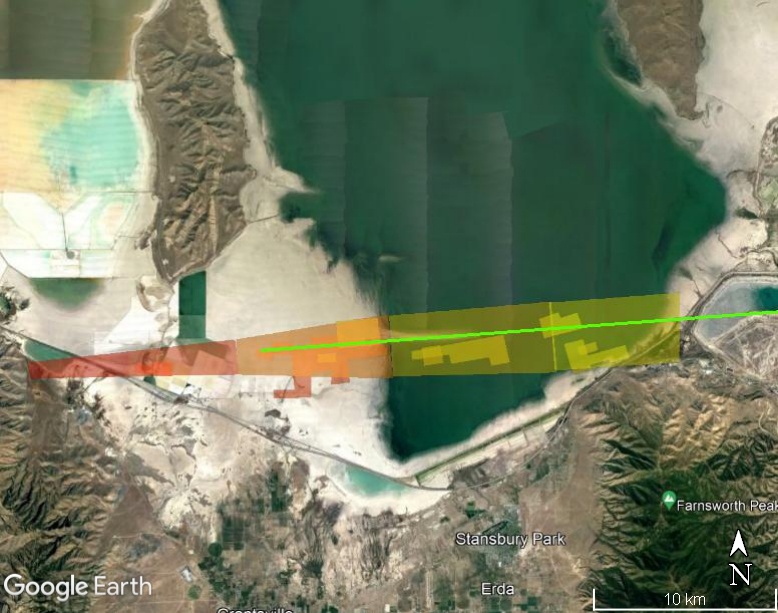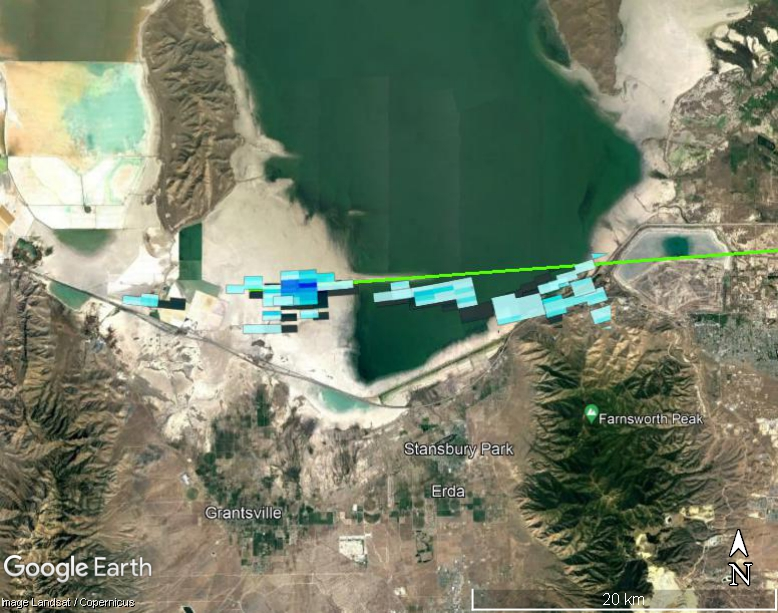DATE/TIME8/13/2022 @ 1431 UTC8/13/2022
|
LAT/LONG40.733638 • -112.419765
40.733638
|

This meteorite fall was a daytime fireball that occurred at 8:31 AM local time on 13 August 2022, or 14:31 UTC. The fireball produced loud sonic booms heard across Salt Lake City, UT and 39 eyewitnesses reported it to the American Meteor Society, of which 16 reported hearing the event.
Over dozen meteorites have been recovered from this event so far.
This event is recorded as American Meteor Society event number 4942 for 2022. Signatures of falling meteorites can be found in imagery from two nearby NOAA NEXRAD weather radars, KMTX (Salt Lake City, UT) and KFSX (Pocatello, ID).
The first appearance of falling meteorites on radar occurs at 14:32:45 UTC and 6,360 m above sea level (ASL) in the KMTX 1428 UTC data set in the 4.04 degree elevation radar sweep. Signatures consistent with falling meteorites appear in a total of seven radar sweeps, with a final signature appearing at 14:40:30 UTC. Total elapsed radar observation time of falling meteorites is seven minutes and 45 seconds, with a calculated mass range between 1.5kg and 0.0086g (dust-sized particles). The fireball traveled from east to west and the largest masses are observed to the western end of the strewn field.
Classification of this meteorite is underway by University of Utah, with Cascadia Meteorite Laboratory (Portland, OR) acting as repository.
